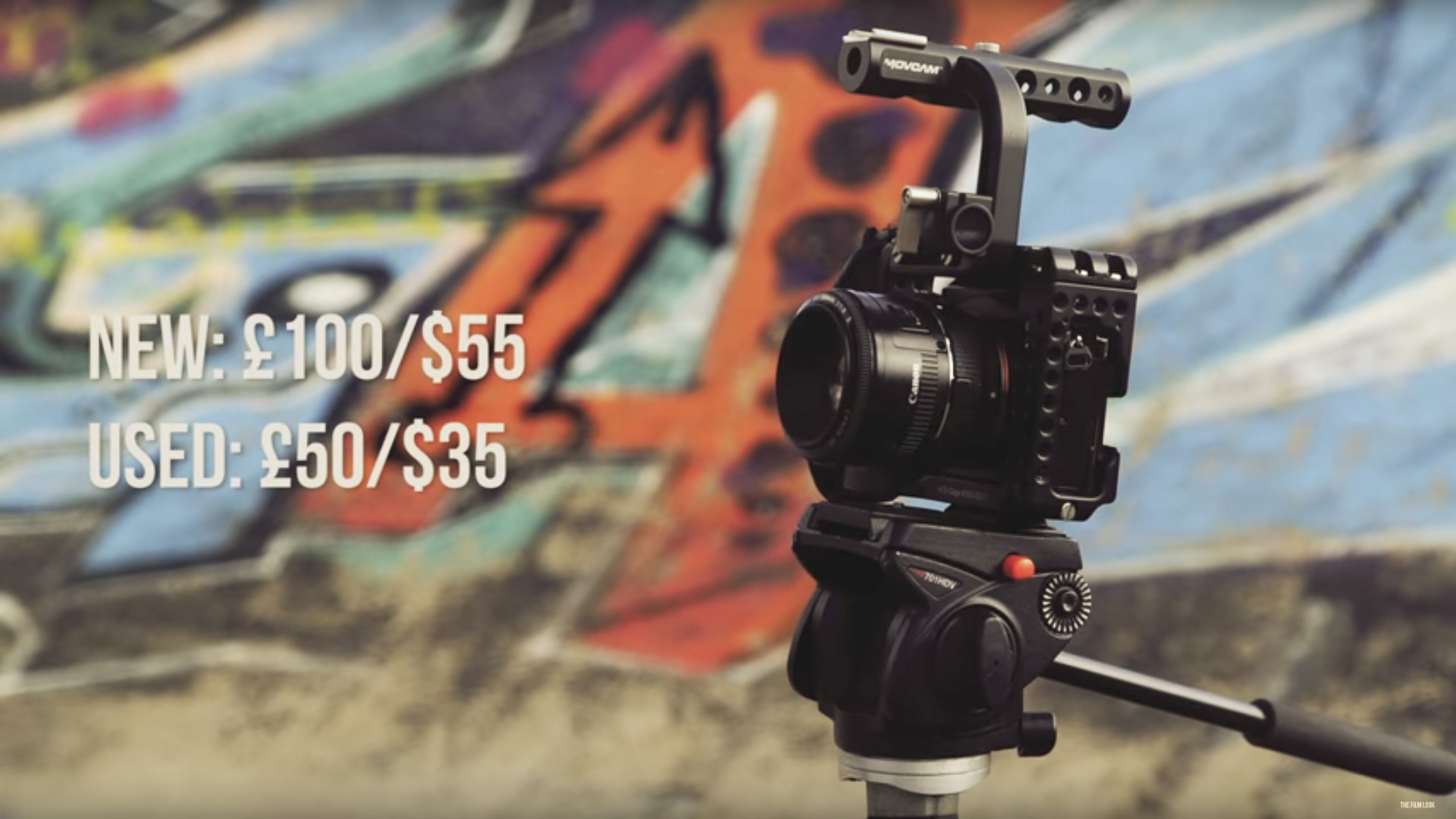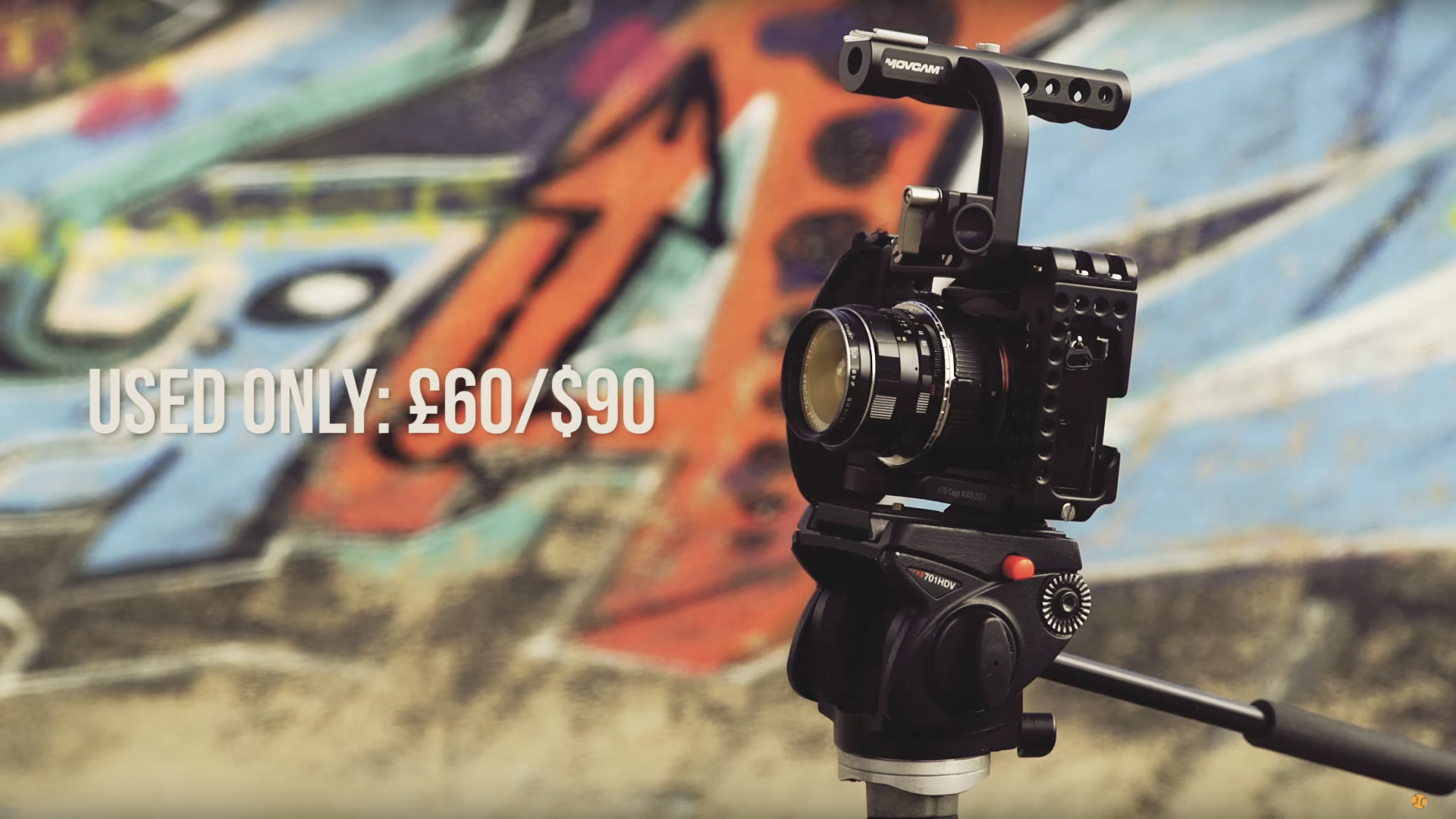We’ve built up a small collection of camera lenses over the years. Some are great, some are rubbish, some are cheap, and others more expensive. And they all do something a bit different.
Today we’re going to talk about our camera lenses.
We have 8 different camera lenses that we use for film projects. Some we use a lot - and some are for very special occasions. We’ve had other lenses in the past, but we sell any lens that we simply don’t use - they can be expensive paper weights after all.
We’ve been purchasing lenses over the past 5 years or so, and the majority of our lenses are 2nd hand. Let's start off with the lens we use the most.
The Canon L series 24-105 @ f4.
[New: £649.99 - Used: £350]
This is the lens we have on the camera the majority of the time. Because of its wide focal range, it’s perfect for run and gun set ups because of it’s ability to go from a wide shot to a close up in a split second.
This lens also includes image stabilization, which means you can use this lens in hand held situations and not suffer from micro jitters. This is a great work horse lens for commercial and promotional video shoots and a quick turnaround film.
You get a very clean sterile look from this lens. It comes with a lens hood to prevent flaring, but if you want to get some sexy lens flares you can always take it off and embrace the flaws.
This lens does only stop down to f4. If you are looking for a low light lens or super shallow depth of field, this isn’t going to cut it. But it does bring me to the next lens in the line up!
The Canon 50mm @ f1.8.
[New: £100 - Used: £50]
Also referred to as the nifty fifty, this is a great 2nd lens to have in your kit bag. It’s a prime lens, which means it can’t zoom in or out, but has incredible low light capabilities. This lens can stop down to f1.8 meaning it can let in a lot more light than other lenses. This feature also gives you an incredibly shallow depth of field which is ideal if you want to shoot something very arty and atmospheric.
At 50mm this lens is very pleasing to the eye. 50 millimetres is considered very close to the perspective of the human eye which helps retain natural sizes and shapes on a subject, especially on the human face. You don’t get a squashed or squirrel face like wide and telephoto focal lengths.
The bad thing about this version in particular is it’s lack of image stabilization. Put this in your hands and it will suffer from micro jitters. So get this locked onto a tripod if you want to avoid shaky footage.
It is also very fragile. The plastic body will mean it won’t last many drops or knocks. The focus ring on this model is also not silky smooth like more premium lenses, so pulling focus on this will be a bit more tricky.
This lens isn’t for every situation. But for it’s cheap price, it’s a great secret weapon if you want to give your shot a bit more style and if you need to shoot in a low light situation. This is also the lens are we using right now!
Next on the list is another Canon.
This time it’s the 60mm Macro @ f2.8.
[New: £450 - Used: £250]
This lens isn’t a workhorse - it’s definitely for particular situations. Because of it’s incredible macro capabilities, this lens can get super duper close to a subject and stay in focus. You’ll find with most lenses that you will need to keep a significant distance in order to stay in focus, but with this lens you can focus onto the end of a pin, great for shooting phone screens, words on a page, or extreme macro close ups.
This lens also stops down to f2.8 which means it can give you razor thin depth of field and is more than capable of performing well in low light situations.
This version of the lens doesn’t have image stabilization. So, like the nifty fifty, get this on a tripod and lock it down to avoid any micro jitters.
This lens is also made for APS-C sensors, which means it will vignette if you put it on a full frame camera. We combat this by changing the setting of our A7s to APS-C and cropping the image in.
Next is our wide angle lens - the Tokina 11-16mm @ f2.8.
[New: £280 - Used: £200]
This is technically an APS-C grade lens which means if you put it on a full frame camera like our Sony A7S and zoom it out to 11mm, you will see some major vignetting. The good thing is that if you zoom it into 16mm this will disappear, so just treat it like a prime lens!
We don’t shoot on this lens a lot, but it’s there in case we ever need to get a super wide angle. We have used this in the past on our vlogs so we can get the whole studio in shot, and we love to use this lens when shoot time lapses.
The Tokina also stops down to f2.8 so it lets in a lot of light.
Just be careful when shooting with this lens. We used it to film a segment of our Podcast and because of the perspective, we ended up turning Rob into a Hobbit.
Next we have the first of our vintage lenses. The Takumar 35mm @ f3.5.
[Used only: £60]
You might be wondering why you’d go for a vintage lens rather than a new lens. We have a video all about vintages lenses here that goes into detail, but basically vintage lenses tend to be sharper, built better, and they usually come with some unique visual flaws which add some real style to your shot.
The Takumar is a fiercely sharp vintage prime. It’s focal length gives a nice wide angle without distortion, and it gives your shot a really nice faded vignette. Vintage lenses tend to offer something a bit more in terms style - they are far from sterile.
Next we have our vintage telephoto prime. The Jupiter Nine 85mm @ f2.
[Used only: £120]
With this lens, you’ll either hate it or love it. It’s a vintage lens, which means it’s built really well, the glass is superb, and it’s nice and sharp. It also stops down to f2 so it’s great in a low light situation and gives you really soft shallow depth of field.
But it comes with some flaws which you either have to tackle or embrace. The Jupiter Nine has some serious lens flares, and at lower f stops it does add a slight vignette. If you’re looking for a smooth, dreamy look, this is the lens for you. If you need something that shoots a super clean image, you will have to spend some time learning how to tame this beast.
We purchased a lens hood that reduces most of the major lens flares, but for the best results you will have to place some flags just out of frame like we do in this video here about our “no lights” lighting setup.
This is my favourite lens. It’s got some serious character.
So, we have a wide vintage prime, a telephoto vintage prime, and now we have a mid-range vintage prime. The Helios 44m 58mm @ f2.
[Used only: £25]
Like the other vintage lenses we have, you can see straight away that this lens is built a heck of a lot better than something in the similar focal range like nifty fifty but at a fraction of the price. The unique flaw in this lens is it’s famous swirly bokeh. The bokeh balls seem to wrap around a subject when shooting at a low f stop, giving it a very unique look.
Last on the list is our most telephoto lens in the collection. The Canon 75-300mm @ f4-5.6.
[Used only: £80]
I’ll talk about the downsides to this lens to begin with, just to get it out of the way. First of all, it’s got a shoddy plastic construction. The zoom and focus ring are a bit loose, and the picture you get out of this is a little bit milky compared to something a bit more expensive.
It features a massive macro distance of 1.5 metres to get in focus, and it doesn’t feature image stabilization so you NEED to lock this lens down onto a tripod. It also features a variable f stop, which means that it will change from f4 when you shoot at 75mm to f5.6 when you shoot at 300mm. This may seem like it isn’t a big deal but it’s definitely something to be aware of.
The one good thing about this lens is simply it’s focal length. At the maximum focal distance of 300mm, the shot you get out of this looks like no other. It’s great for simulating binoculars and giving the shot an “espionage” feel.
All of the lenses have their own character and language. Just remember to choose the right tool for the right job.
This video is sponsored By
http://bit.ly/pack-emulsion - Make your video look like it was tailor-made for the silver screen with RocketStock’s film grain overlay pack, Emulsion!
http://bit.ly/track-losinggames - Click here to download this episode's track. Check out Premiumbeat.com to discover a huge range of exclusive royalty free music!
Equipment Links
🎥 This episode's kit/gear/equipment:
US links:
Canon 24-105mm: http://amzn.to/2fWen7v
Canon 50mm f/1.8: http://amzn.to/2fVVzoQ
Canon 60mm Macro: http://amzn.to/2ycaGFg
Tokina 11-16mm: http://amzn.to/2fW0aHu
Takumar 35mm: http://amzn.to/2yLjPBU
Jupiter Nine 85mm: http://amzn.to/2xKRDQR
Helios 44m 58mm: http://amzn.to/2x1GKf2
Canon 75-300mm: http://amzn.to/2yMis5R
UK links:
Canon 24-105mm: http://amzn.to/2woCL7F
Canon 50mm f/1.8: http://amzn.to/2wnWK6y
Canon 60mm Macro: http://amzn.to/2xBOxj4
Tokina 11-16mm: http://amzn.to/2fFwt0p
Takumar 35mm: http://amzn.to/2wojkfc
Jupiter Nine 85mm: http://amzn.to/2wokiYS
Helios 44m 58mm: http://amzn.to/2ywzPXm
Canon 75-300mm: http://amzn.to/2woqj89
DISCLAIMERS:
Some of these links are affiliate links, if you purchase gear via these links The Film Look will receive a small commission, but there will be no additional cost to you. Thank you!








